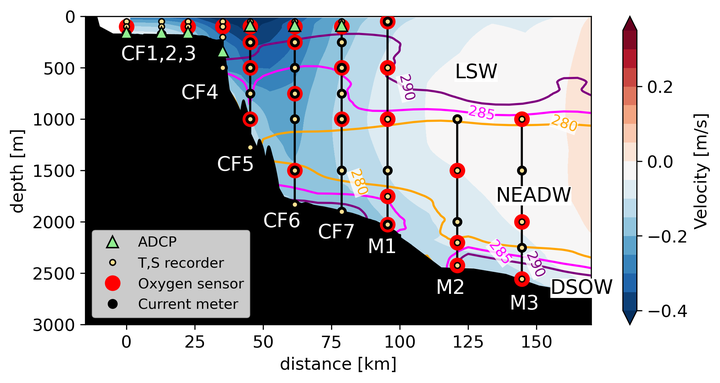Western Irminger Sea Ventilation

In the subpolar North Atlantic, globally significant quantities of carbon dioxide and oxygen enter the water column via dense water formation. In order for these carbon- and oxygen-rich waters to ventilate the deep ocean and affect global climate, however, they must be transported away from their formation sites. In the Irminger Sea’s western boundary current system, there are three potential pathways for high-oxygen waters into the deep ocean: (1) The boundary current may be ventilated directly to depths greater than 500m via down-front wind forcing; (2) Labrador Sea Water (LSW), which forms via deep convection in the Labrador and Irminger Basin interiors, drains into the boundary current; (3) Overflow waters spill over the Denmark Strait into the Irminger Sea, entraining LSW and other high-oxygen water masses along the way.
Using novel moored O2 measurements in the western Irminger Sea, we aim to quantify the amount of O2 that enters the boundary current through each pathway and elucidate the dynamics that govern each route. The moored O2 sensors were added to existing Overturning in the North Atlantic Program (OSNAP) moorings in summer 2020 in coordination with other O2 sensor deployments on OSNAP moorings across the Labrador Sea. We plan to examine how water masses evolve around the southern tip of Greenland using this combined dataset, as well as how deep water formation and variability couple with oxygen uptake throughout the subpolar North Atlantic.
This work is funded by NSF and is being undertaken in close collaboration with the NSF-funded GOHSNAP project, whose PIs are Jaime Palter, Roo Nicholson, Hilary Palevsky, and Dariia Atamanchuk.